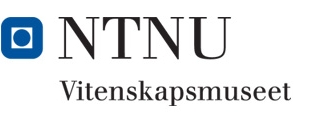NTNU Vitenskapsmuseets blogger
Mapping of polychaete worms in coastal areas of the Skagerrak
The project we have had running for two years in the Skagerrak entitled: «Polychaetes in coastal areas of the Skagerrak – from early natural history descriptions to need of current knowledge» has come to an end. All samples obtained during the project have not been sorted and identified but so far 140 species of polychaetes from coastal areas have been recorded. Several new records are among them. An effort has been done to provide DNA barcodes from the samples. These will be valuable in assessing specimens from type localities and in on-going taxonomic work.

The project has focused on increasing the knowledge on marine bristle worms (Polychaeta) in Norwegian coastal waters of the Skagerrak, and has been funded by the Norwegian Taxonomy Initiative. Despite a long historic tradition of marine investigations in the area, the knowledge is still inadequate and incomplete. The project has comprised a faunistic part with particular focus on sampling in undersampled environments and habitats, and a taxonomic part with focus on revising the status of early described species. Sampling has been carried out in intertidal areas, shallow waters and at greater depths down to 285 m using a variety of different methods and sampling gears. Collected material has been fixed in formaldehyde solution for identification purposes and morphological studies and in ethanol for molecular genetic analyses. Samples have been taken in two main areas, the coastal region from Risør to Kristiansand, and the part of the Oslofjord from Drøbak to Sandefjord. In total 140 species have been recorded.
Most species were identified during sampling cruises and workshops in May 2011 at Arendal, and October 2011 at the marine biological station in Drøbak. Two species are new to science (Chaetozone sp. nov, Sabellidae nov.) and three species are new to Norway (Eumida kelaino, Ophiodromus pallidus, Marenzelleria viridis). Marenzelleria viridis is an alien species which has been identified with certainty for the first time in Norway. Through NorBOL, which is the Norwegian part of the global ‘Barcoding for Life Initiative’, tissue samples from 230 specimens representing 94 species have been submitted for DNA barcoding. This is the first major barcoding activity of marine bristle worms in Norway. Preliminary results indicate that at least two «species» include more than one species. In addition, genetic sequences differ in species in the family Opheliidae from Skagerrak and western Norway. Early described species have often been confounded with similar species both in Norwegian waters and from abroad. More than 40 species of marine bristle worms are originally described from the Oslofjord and coastal waters of the Skagerrak.

Most species descriptions date back from the period 1770-1900. The project has aimed at obtaining new material for revisionary work from original localities (type localities) for as many of the species as possible. Type localities have been ascertained from the original descriptions and other historic literature. In total, eight species have been collected from type locality and about 10 more species from nearby areas when localities have not been exactly specified. The material will be used for genetic characterisations and morphological descriptions, which is in progress for the families Opheliidae, Scalibregmatidae and Maldanidae. Original material (syntypes) from some of the species has been located in the collections of the Natural History Museum, Oslo. A large part of collected material, both formalin- and ethanol-fixed, has not been work up during the project period. This material will be used further in comparative studies. New results from the project may therefore be expected in the future.
Projects partners have been: Eivind Oug, Jon A. Kongsrud, Torkild Bakken, Arne Nygren, Fredrik Pleijel, Danny Eibye-Jacobsen, Ann-Helén Rønning and Sabine Cochrane.
